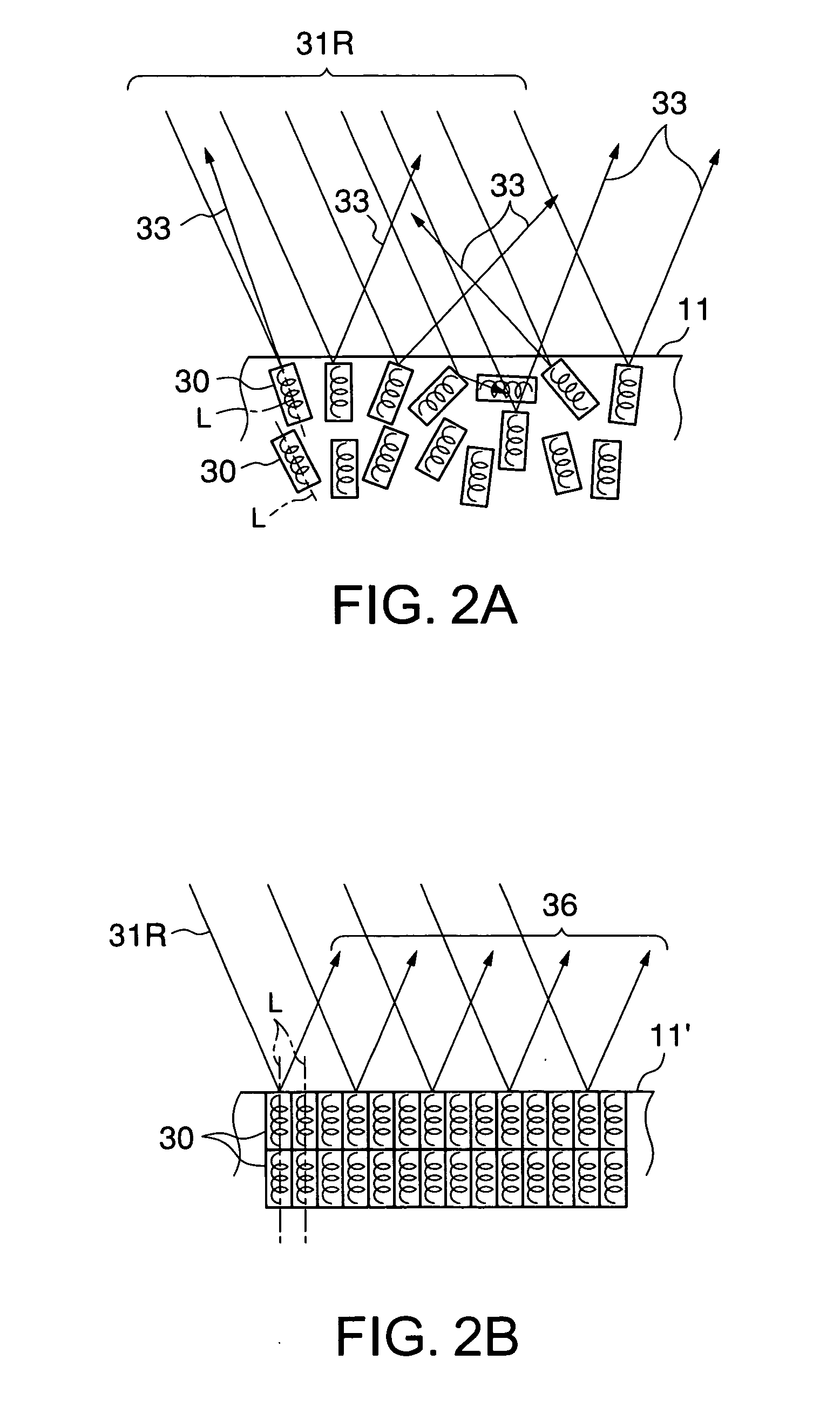Projection screen and projection system comprising the same
a projection screen and projection system technology, applied in the field of projection screens, can solve the problems of inability to provide good image display, inability to show good image display performance under the description, and inability to meet the requirements of image visibility, so as to improve image visibility, improve image contrast, and improve image visibility
- Summary
- Abstract
- Description
- Claims
- Application Information
AI Technical Summary
Benefits of technology
Problems solved by technology
Method used
Image
Examples
examples
A specific example of the above-described embodiments will now be given below.
example
A first cholesteric liquid crystal solution having a selective reflection wave range with a center wavelength of 440 nm was prepared by dissolving, in cyclohexanone, a monomer-containing liquid crystal consisting of a main component that was an ultraviolet-curing, nematic liquid crystal (94.7% by weight) and a polymerizable chiral agent (5.3% by weight). A liquid crystal containing a compound represented by the above chemical formula (2-xi) was used as the nematic liquid crystal. A compound represented by the above chemical formula (5) was used as the polymerizable chiral agent. To the first cholesteric liquid crystal solution was added 5% by weight of a photopolymerization initiator available from Ciba Specialty Chemicals K.K., Japan.
By a bar coating method, the above-prepared first cholesteric liquid crystal solution was applied to a substrate, a 200 mm×200 mm acrylic sheet with a thickness of 3 mm.
This substrate was heated in an oven at 80° C. for 90 seconds, thereby conduct...
PUM
 Login to View More
Login to View More Abstract
Description
Claims
Application Information
 Login to View More
Login to View More - R&D
- Intellectual Property
- Life Sciences
- Materials
- Tech Scout
- Unparalleled Data Quality
- Higher Quality Content
- 60% Fewer Hallucinations
Browse by: Latest US Patents, China's latest patents, Technical Efficacy Thesaurus, Application Domain, Technology Topic, Popular Technical Reports.
© 2025 PatSnap. All rights reserved.Legal|Privacy policy|Modern Slavery Act Transparency Statement|Sitemap|About US| Contact US: help@patsnap.com



